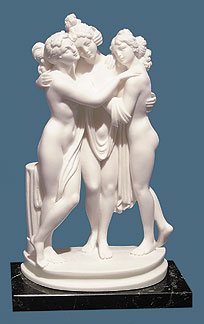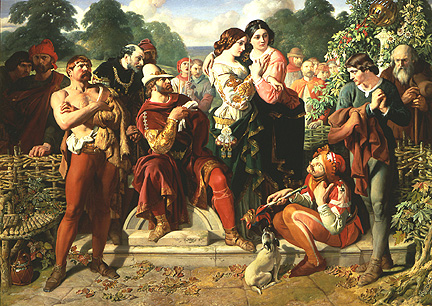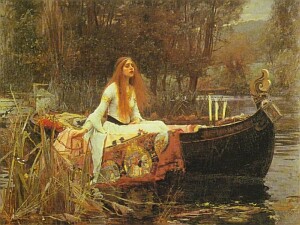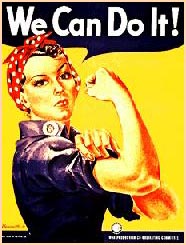|
The Role of Women
Throughout the Ages of Literature
|
|
Women in Greek mythology were perceived to be more as sexual objects than individuals. Many were taken advantage of by the Gods and by human beings. One would see that women’s rights were very limited and they were not allowed to express much of their freedoms. Within this time period women were blamed for wars, destruction of towns, and the death of men. It was not unliky to see goddesses using their powers for vengeance. Although the role of human women was limited the existence of goddesses attributed great amounts of power to female characters.
|
|
|
The women of the Medieval times were surprisingly a lot more candid and sexual than one might expect of an era where the ideal of femininity was Mary, the mother of Jesus. In actuality, the women in the literature of the period, as well as the historical female figures seemed to be torn between the ideal and the physical desires and domineering character that her antagonist, Eve, embodies. In a careful reading of the literature of the time, one finds the first buds of a feminist literature emerging from the words on the pages. |
|
|
The theme of misogyny and superiority of men was the typical genre that authors took within their writing. Women were not looked to as a person but were considered a mere necessity for the procreation process. Women continued to be split between the ideal of the Virgin Mary, and her fallible counterpart, Eve. Unfortunately, the Virgin Mary was one of a kind, so there was often a general distrust of women. This distrust of women lead to most works degrading the female race, and terming females as the "other", which was to be feared. Equality between the sexes was not present within this era, and is evident from the numerous writings degrading the female race. |
|
|
Victorian and Turn of the Century Literature The role of women in 19th century
literature was one in which they redefine their place in society by
accepting an image of themselves which involved both home-centeredness
and inferiority. Elizabeth Gaskell did not concede to the idea of women’s
inferiority, although she does concede to the notion that a woman’s
place is in the home, as is evident by her portrayal of Bessie in her
poem “Cranford.” In this time period, women were being portrayed
as protagonists more often than in the past. In Gustave Flaubert’s
novel Madame Bovary, Emma, the lead character, is portrayed as a “tragic
heroine.” At the time the book was written (1856), the character
of Emma was viewed as foolish and putting herself in narrow circumstances.
Her suicide demonstrates the dangers of life for women who were looking
to become independent at that time. Alfred Lord Tennyson’s poem,
“The Princess” states, |
|
|
Women’s roles in literature has evolved throughout history and had lead women to develop into strong independent roles. Modern literature has served as an outlet and sounding board for women’s rights and feminist pioneers. Female writers have come to the fore front and provided today’s readers with a vast array of ethnic and cultural perspectives. The unique voice of female minorities is a common theme in many coming of age novels that allows each writer to establish a separate identity for their characters and themselves. Women in modern literature often include strong independent females juxtaposed by oppressed women to provide examples for young female readers and to critique short comings of our society. The emergence of the independent female novelist in America has allowed for a new evolution of the role of women in fictional literature. |
|
|
Spanish and Latin American Literature It is difficult to summarize the role of women in Hispanic literature, as it has been ever changing. At times she may be submissive, at others, the fiercest of beasts, and most surprisingly sometimes seemingly weak but in actuality the most contriving of creatures. It is surprising to see a feminist view point since the Medieval times in Spanish and Latin American literature, but it’s most productive era has come to exist in the last twenty years.
|
|
|
Creators Jessica Krivis Eva Regueira Brian Calhoun Paul DiMuont Eddie Ulivari
|





